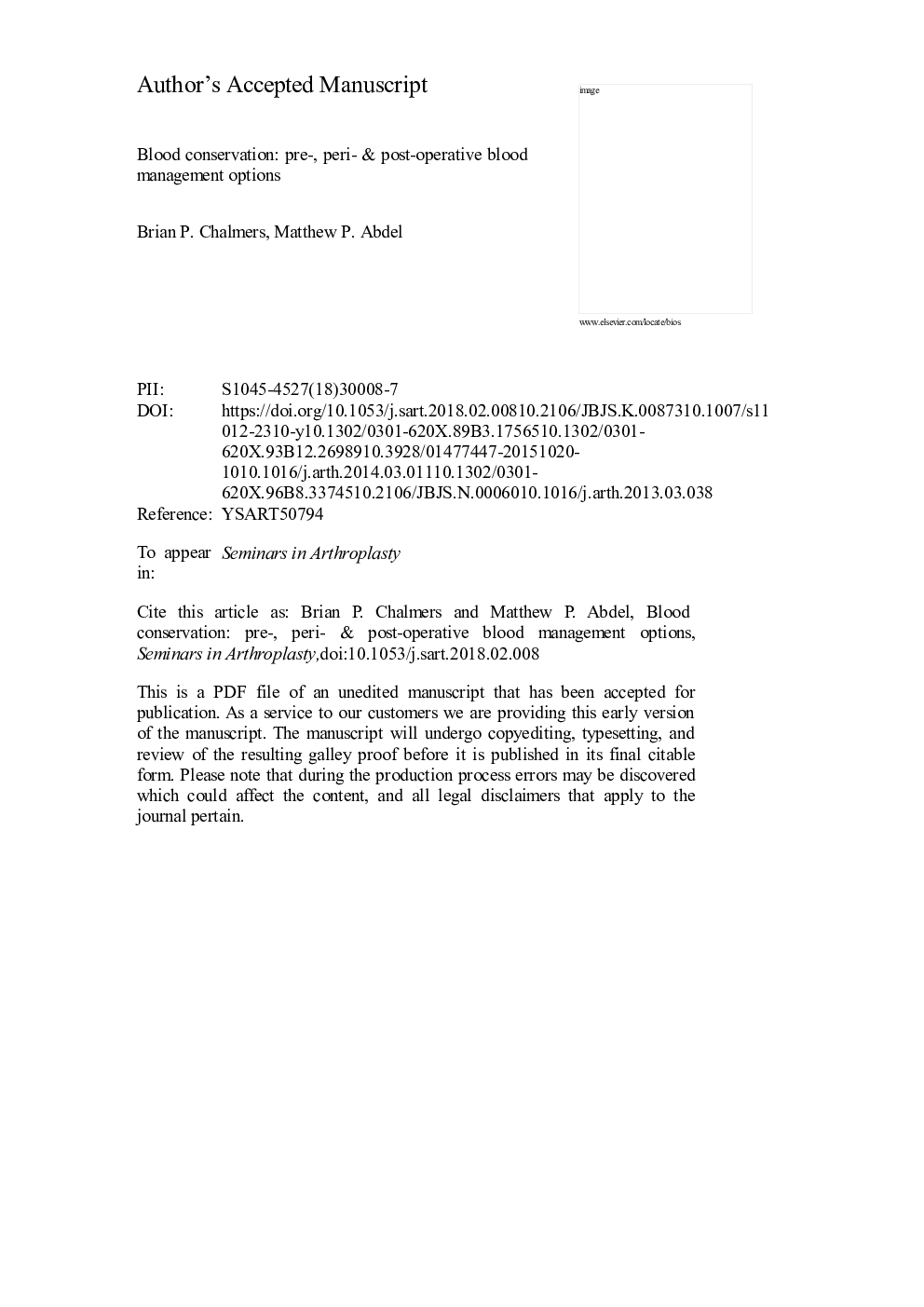| Article ID | Journal | Published Year | Pages | File Type |
|---|---|---|---|---|
| 8804065 | Seminars in Arthroplasty | 2017 | 14 Pages |
Abstract
Perioperative blood loss during elective total joint arthroplasty (TJA) can be significant, traditionally resulting in high blood transfusion rates. However, due to the risks and costs of allogeneic blood transfusion, the focus in contemporary TJA has been on strategies to minimize perioperative blood loss. While a multimodal approach is paramount in elective TJA, three main factors have contributed dramatically to the reduced allogeneic blood transfusion rates: (1) preoperative assessment and treatment of anemia, (2) expanded use of antifibrinolytics, particularly tranexamic acid (TXA), and (3) a restrictive transfusion strategy postoperatively.
Keywords
Related Topics
Health Sciences
Medicine and Dentistry
Orthopedics, Sports Medicine and Rehabilitation
Authors
Brian P. MD, Matthew P. MD,
